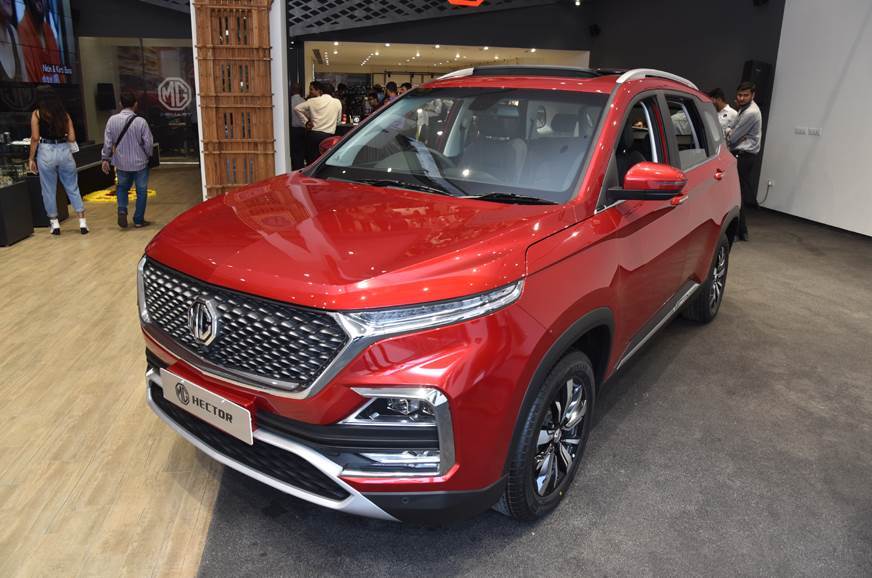In the run up to the market launch of the Tata Harrier in January 2019, Tata Motors has drip fed information about this all-new SUV and generated a frenzied interest in the latest Tata, the likes of which have not been seen since the Nano.
It’s not just the craze for SUVs but the fact that this is the first Tata to be built on a Land Rover platform, which from the get-go gives it a certain amount of credibility. But should you be excited about the prospect of an Indian Land Rover? Or is this just another Tata SUV? We delve under the skin to tell you five things you didn’t know.
1) Backseat space dictated the platform
When the Q5 (the original project code for the Harrier) was first conceived in 2013, the original plan was to use the Land Rover Freelander’s platform (L359) But, the Freelander’s 2,650mm wheelbase didn’t allow too much legroom, which meant it fell short by Indian market standards. However, with the launch of the Discovery Sport in 2014, built on an all-new (L550) platform with a generous 2,741mm wheelbase, Tata Motors dropped the L359 and switched to the latest architecture. As a result, the Harrier has as much legroom as a Discovery Sport.
2) JLR’s Ingenium engine was too expensive
With the Discovery Sport’s L550 platform underpinning the Harrier, using the same powertrain was the logical thing to do. In fact, the original plan was to use JLR’s Ingenium engine locally produced in India but the project fell through because the company realised that the projected volumes (over 1,00,000 engines to be used between Safari Storme, Hexa and the Harrier) were totally unrealistic. For small volumes it’s not feasible to localise an engine and the other option, which is to import and pay hefty customs duties, would have thrown the entire cost structure out of whack.
3) Engine and transmission options are limited
Tata didn’t have too much of a choice when it came to selecting the powertrain for the Harrier as there were not too many transverse engines available that would suit the Harrier’s weight and size. Tata Motors were in talks with VM Motori and even Hyundai to source an appropriate diesel but finally zeroed in on the Fiat 2.0 turbo-diesel. What tipped the decision in Fiat’s favour is that this engine, which powers the Jeep Compass, was being locally made, providing a massive cost benefit. Another aspect that adds to the engine’s cost effectiveness is that the Fiat engine is made at the Ranjangaon facility that is jointly owned by Fiat and Tata.
However, the Harrier could not use the Compass’s 9-speed DCT automatic as the transmission isn’t rated to take the load of the heavier Harrier. Again, Tata Motors shopped around, and after talks with a few transmission suppliers like Aisin, finalised the Hyundai 6-speed torque converter auto ‘box. However, the delay in closing the deal with Hyundai has meant there will be no automatic transmission option at launch.
The Harrier is unlikely to get a petrol option in a hurry either. The Fiat 1.4 MultiAir would be an obvious option but again the Harrier’s gross vehicle weight (GVW) which is significantly heavier than the Compass, rules out this option too.
Tata Motors might consider at a later stage a sporty version of the Harrier powered by JLR’s 240hp 2.0-litre Ingenium engine.
At launch, the Harrier will come with just one engine and transmission option – a Fiat 140hp, 2.0-litre diesel and 6-speed gearbox.
4) Suspension was developed by Lotus and JLR
The front suspension of the Harrier is a carryover from the Discovery Sport and uses the same sub-frame and McPherson Strut assembly. At the rear however, the multi-link aluminium suspension has been replaced by a simpler and locally developed torsion-beam or ‘twist-blade’ suspension. Lotus Engineering did all the fine tuning and balancing of the suspension with a lot of inputs from JLR. In fact, the suspension development was a great example of collaboration between the Tata, Lotus and JLR teams.
5) Three-row version will be shown at the 2020 Auto Expo
It’s no secret that a three-row, seven-seater derivative of the Harrier is under development but how different will it be? The biggest difference will be in terms of length. To accommodate a third row, the seven-seater Harrier will be 62mm longer than the five-seater, but there will be no change in the wheelbase. The seven-seater will also be powered by the same 2.0-litre Fiat diesel but with a higher output of over 170hp. The seven-seater will get both manual and automatic options from launch.
Also see:
2018 Tata Harrier image gallery
Tata Harrier to get unique twin digital screens
SCOOP! No AWD for Tata Harrier
SCOOP! Tata Harrier dimensions revealed
from Autocar India https://ift.tt/2FUFgrD
via IFTTT

No comments:
Post a Comment